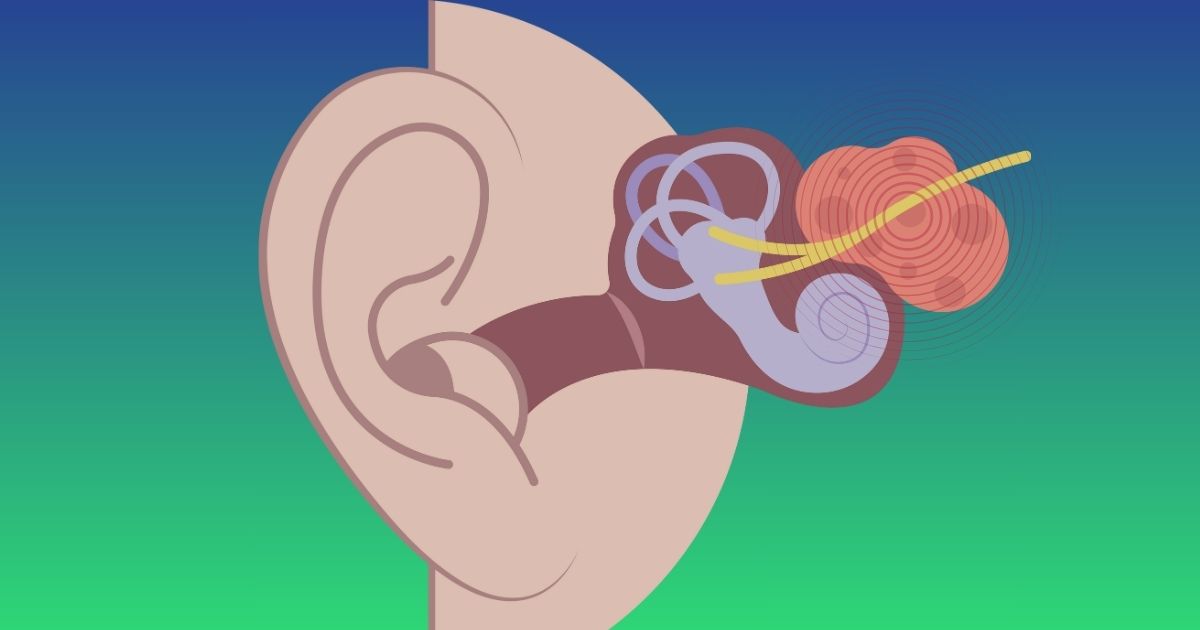As audiologists providing both vestibular and hearing assessment, we evaluate individuals with a variety of hearing and/or dizziness related symptoms. We frequently encounter the same common diagnoses. For instance, a symmetric high frequency sensorineural (inner ear/auditory nerve) hearing loss is commonly encountered in a hearing evaluation and may be observed in older adult patients and/or those who have been exposed to excessive noise.
In a balance clinic, one is likely to encounter benign paroxysmal positional vertigo (BPPV) on a daily basis, as this is an extremely common cause for recurrent episodic positional vertigo. However, less common pathologies will present and it is our duty to be aware of the diagnostic patterns observed with these diagnoses. One of these less common pathologies that may cause symptoms of unilateral hearing loss, tinnitus, facial numbness, dizziness and/or imbalance is vestibular schwannoma or acoustic neuroma.
Vestibular Schwannoma Diagnosis
A vestibular schwannoma is a benign, slow-growing tumor, most often arising from the vestibular nerve and typically only affecting one side. A tumor in a small space, such as in the internal auditory canal, can compress the auditory and/or vestibular nerves causing unilateral auditory and vestibular symptoms. Individuals with vestibular schwannoma typically do not report symptoms of vertigo (illusion of self or environmental motion), but more typically experience imbalance, likely due to gradual central compensation for the unilateral vestibular deficit. Vestibular schwannoma are relatively rare, with an incidence of around 1 per 100,000 in the United States.
The diagnosis of a vestibular schwannoma/acoustic neuroma is most typically made with the combination of an MRI, conventional audiogram, vestibular testing and auditory brainstem response testing. Individuals with vestibular schwannoma typically have unilaterally abnormal test results, making tests that independently assess the right and left sides more useful than those that assess both sides in conjunction.
We saw a patient recently with a vestibular schwannoma on the left side who had a typical presentation of auditory and vestibular function tests. An MRI performed at another clinic confirmed the vestibular schwannoma prior to assessment. A hearing evaluation and vestibular assessment were completed with this patient prior to assessment and management by a neurotologist.
This patient reported a several-year history of gradually progressive hearing loss, tinnitus, and imbalance while ambulating. A hearing test revealed a significant asymmetry on the pure tone audiogram across all test frequencies, with poor word recognition ability in the left ear.
Rotary chair testing showed normal gain, symmetry and phase measures across all test frequencies (consistent with a symmetric and normal vestibulocular reflex (VOR) function). Rotary chair testing measures VOR function across a range of speeds by rotating the individual in a chair while monitoring the VOR response with video goggles. This method of vestibular assessment assesses both the left and right sides in conjunction, as the individual’s whole body is rotated.
Lateral vHIT (video head impulse test) testing revealed reduced gain with frequent overt saccades noted for leftward head impulses (poor VOR response with the oculomotor system attempting to compensate for visual instability due to poor VOR function) and was considered normal for head impulses to the right. The vHIT test is a measure where the examiner makes rapid unpredictable movements of the patient’s head while the patient views a stationary object. The vHIT test allows for independent assessment of all the semicircular canals (head turn sensors), as only normal/near normal semicircular canal function will allow for stable vision with an impulsive, unpredictable head movement in the plane of the canal stimulated. This allows for independent assessment of each side. More on vHIT testing can be found here.
Warm-water, mono-thermal caloric irrigations revealed a 100% unilateral weakness in the left ear (no caloric response from the left ear and a normal response from the right ear). This measure also allows for independent assessment of each side by introducing temperature change to the vestibular system through either air or water placed into the ear canal. More on caloric assessment can be found here.
Auditory brainstem response testing was within normal limits on the right side and was absent on the left side. This type of assessment also allows for independent assessment of each side, and is a measure of auditory pathway function. More on ABR testing can be found here.
This patient’s test findings were a hallmark presentation of a vestibular schwannoma in that measures of auditory function were asymmetric, reduced or absent on the affected side. As is consistent with a central vestibular compensation process, vestibular function measures that individually assessed each side were grossly abnormal, while measures that assessed overall VOR function were normal. Vestibular schwannoma is a relatively rare finding and often times the auditory and vestibular functions tests performed with these patients do not present this clearly.
Stay tuned for an upcoming post on an atypical presentation of vestibular schwannoma.

Brady Workman, AuD, is an audiologist in the Balance Disorders program at Wake Forest Baptist Health Center. He has authored several articles relating to balance and vestibular disorders as a regular contributor and co-editor of the Dizziness Depot at Hearing Health & Technology Matters. Brady received his doctorate of audiology from East Tennessee State University in 2018 and is licensed by the North Carolina Board of Examiners for Speech Language Pathologists and Audiologists and is a fellow of the American Academy of Audiology.







A good article!